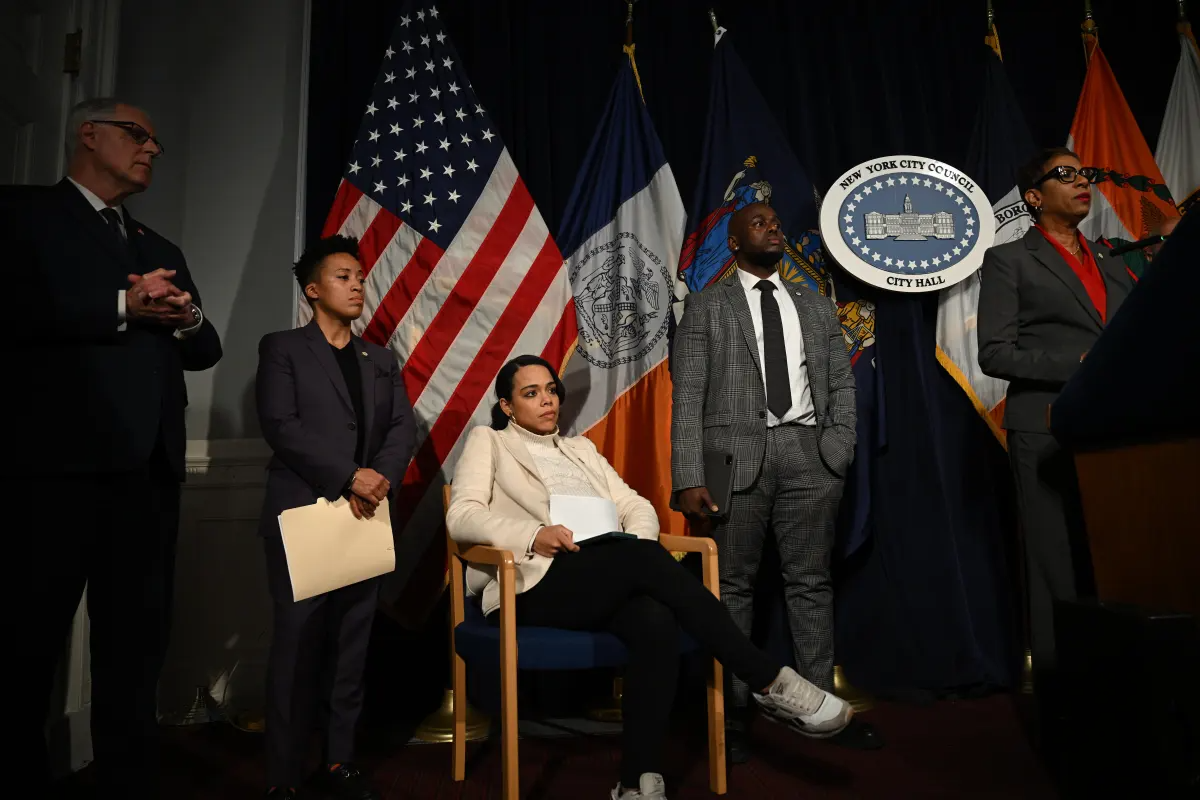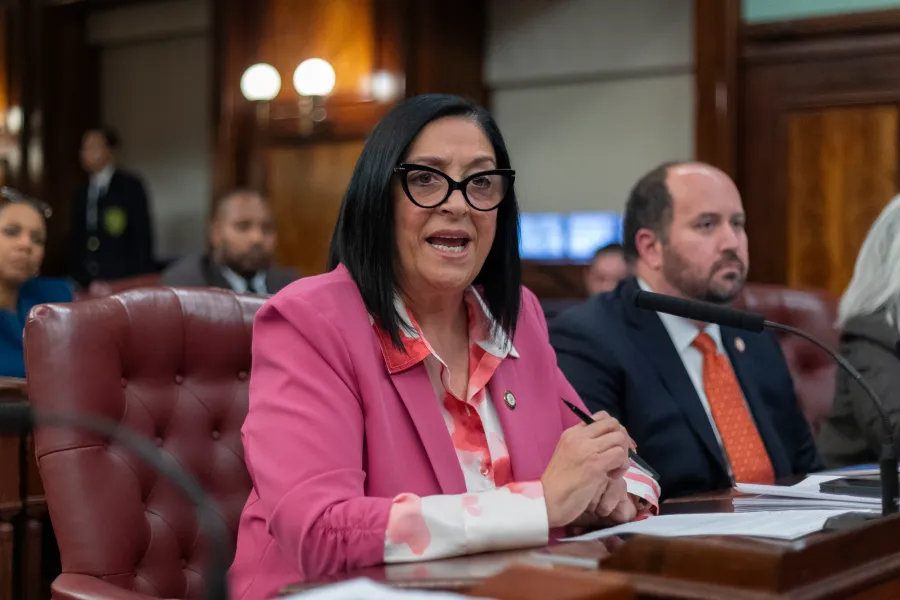City Council Passes Tweaked 'City of Yes' Designed to Add 82K Homes Over 15 Years
The zoning plan could bring ADUs, parking, sewer upgrades, and transit-adjacent apartment buildings to some parts of the five boroughs.

Photo by Susan De Vries
By Ethan Stark-Miller, amNY
A compromise version of Mayor Eric Adams’ zoning overhaul aimed at easing the city’s dire housing crisis squeaked through the City Council on Thursday, clearing its final hurdle to become law.
The mayor’s “City of Yes for Housing Opportunity” plan, a suite of proposals that promises to allow for “a little more housing in every neighborhood,” passed the 51-member chamber by a slim 31-20 margin December 5 vote. The city estimates the plan will spur the construction of 82,000 new housing units over the next 15 years, down from the 109,000 homes it was projected to produce before the council’s modifications were made.
All that remains is for Adams to sign what will likely be his greatest signature accomplishment as mayor thus far into law.
“Today is a historic day in New York City, but, more importantly, for working-class New Yorkers,” the mayor said in a statement. “We showed the nation that government can still be bold and brave by passing the most pro-housing piece of legislation in city history. Our administration proposed and fought hard for this proposal for more than year, and now New Yorkers are the ones who will benefit from lower rent.”
Following several council members’ impassioned remarks for and against the City of Yes, City Council Speaker Adrienne Adams said the body “cannot do nothing” about the city’s dire housing crisis. She also emphasized that the modified version of the plan hashed out by the council is far better than what the mayor initially proposed.
“This council cannot be the body that says ‘no’ to people that need a place to live,” Speaker Adams said in an emotional speech. “This cannot be the council that turns their back on homeless; this cannot be the council that continues to say ‘scrap it, let’s move ahead and do something else,’ because I tell you that will never happen.”

The plan consists of a series of updates to city zoning rules that have not been changed in over half a century. It’s designed to expand the amount of housing that can be built in parts of the city that typically do not see much development.
The zoning changes only narrowly passed the city legislature even after they were altered last month to assuage many council members’ concerns about it potentially altering the character of the neighborhoods they represent. The final deal between City Hall and the council also includes a $5 billion commitment from Adams’ office to fund affordable housing construction, housing affordability programs, infrastructure improvements, and more staff for city housing agencies.
But several council members acknowledged that the modifications addressed their concerns and got them to a “yes.”
Why they voted ‘no’
Those who voted against the City of Yes included every member of the chamber’s conservative Common Sense Caucus, some Democratic lawmakers representing low-rise outer-borough neighborhoods, and a couple of progressives who felt the final deal did not do enough to make housing more affordable.

City Council Member Joann Ariola, a Republican representing Queens, said her “no” vote is driven by her constituents telling her they do not want the character of their neighborhoods changed. She also expressed concerns that the infrastructure in her district, which covers coastal areas in the Rockaways, will not be able to support the added housing that would come with the plan.
“The city of yes will only add to the heavy burden that residents face every day,” Ariola said. “We don’t have the infrastructure and I know the mayor has promised money for infrastructure. But why are we putting the cart before the horse? Why are we putting the housing up and then worrying about the infrastructure?”
David Carr, a Republican council member representing Staten Island, who also voted “no,” said he believes the plan is “incredibly vulnerable to legal action” and “will not survive” such action, which could be forthcoming.
Progressive Council Member Christopher Marte, a Manhattan-based Democrat, said he voted against the plan because it is a “yes to only the real estate developers.”
‘The real controversy’
On the other hand, Brooklyn Democratic Council Member Crystal Hudson said the proposal is modest and that it rightfully forces areas that have not built much housing to begin doing their part. She pointed out that areas like the South Bronx have borne the brunt of new development.
“The reality is that some communities are doing their part to address the housing crisis and others are not, and that’s the real controversy,” Hudson said. “This first-of-its-kind citywide text amendment does the bare minimum to create opportunities to build housing.”

The original plan included proposals such as eliminating a mandate that new projects include a certain number of off-street parking spots, allowing new units to be built next to or within existing homes — known as accessory dwelling units, or ADUs — and clearing the way for three-to-five-story construction near train stations and on top of storefronts.
Other provisions in the scheme would permit developers to build at least 20 percent more housing in their projects as long as it is affordable and allow building on large open areas owned by organizations like houses of worship.
However, several of those measures were altered in response to council members’ concerns.
Therefore, the amended version of the plan will not completely eliminate parking mandates. Instead, it will split the city into three zones where the requirement will be lifted, reduced, or kept in place. Furthermore, ADUs on ground floors and in basements will not be permitted in flood zones, and those in backyards will be barred from some areas, including historic districts.
The provisions allowing for three-to-five-story construction near train stations and above storefronts — known as transit-oriented development and town-center zoning, respectively — were also modified. One of the changes will require developers who build 50 units or more in either type of project to make at least 20 percent of the units affordable at 80 percent of the Area Median Income.
The $5 billion secured by the council includes $2 billion specifically for affordable housing construction and renovation. Another $2 billion will go toward improving the infrastructure of the areas that could see more housing production under the plan, including sewer upgrades, stormwater drainage improvements, and flood mitigation.
Other funding in the deal goes toward homeownership programs, tenant protections, city-funded housing vouchers, and increased housing agency staffing levels.
Editor’s note: A version of this story originally ran in amNY. Click here to see the original story.
Related Stories
- Brooklynites React to Amended ‘City of Yes’ Housing Proposal
- Altered ‘City of Yes’ Housing Plan Passes Two Key City Council Committees
- City Council Releases a Housing Plan in Response to ‘City of Yes’
Email tips@brownstoner.com with further comments, questions or tips. Follow Brownstoner on X and Instagram, and like us on Facebook.









What's Your Take? Leave a Comment